Increased seismic activity under Aniakchak volcano, alerts raised, Alaska
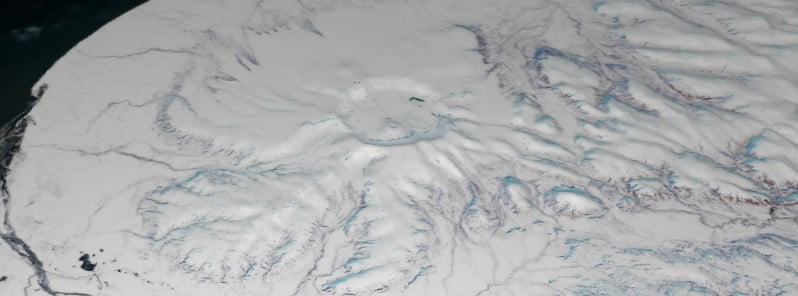
The Alaska Volcano Observatory (AVO) has raised the Aviation Color Code to YELLOW and the Volcano Alert Level to ADVISORY for Aniakchak volcano on February 23, 2023, following an increase in seismic activity. The last eruption at this volcano took place in 1931 (VEI 4).
- The number of earthquakes beneath the volcano has risen to above-background levels and shifted to shallower depths. However, there have been no signs of unrest in other monitoring data, and there is no indication that an eruption is imminent.
- Aniakchak is a stratovolcano located in the Aleutian Range, about 80 km (50 miles) southwest of King Salmon, Alaska. The volcano has been monitored by the AVO since 1989.
- It had at least 40 explosive eruptions during the past 10 000 years, making it the most active volcano of the eastern Aleutian arc.
According to AVO, the background seismicity at Aniakchak has mostly been characterized by deep long-period events, occurring at a rate of about four earthquakes per month. However, from October 2022 to the present, the rate of earthquakes has been more elevated and characterized by shallower earthquakes at depths less than 9 km (5.6 miles) below sea level.
The earthquake rate has further increased since January 31, with dozens of earthquakes detected per day, including an M3.7 earthquake on February 17.
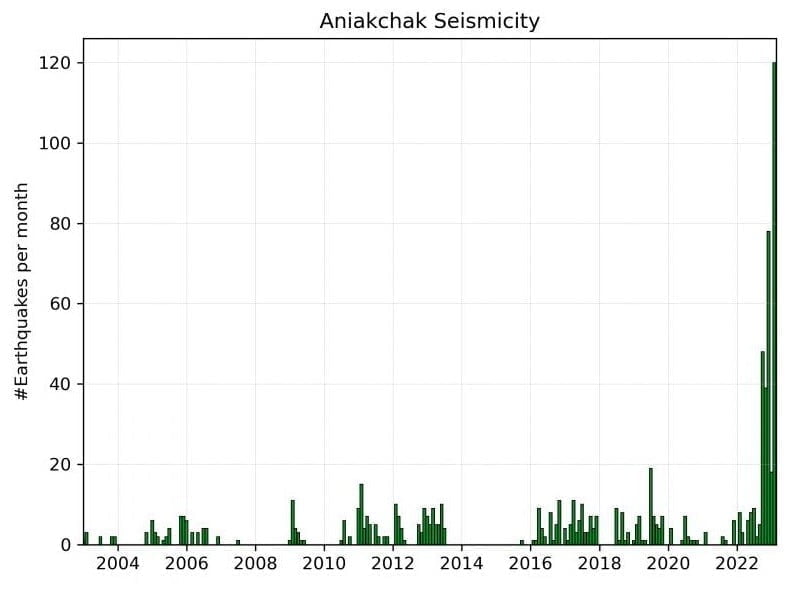
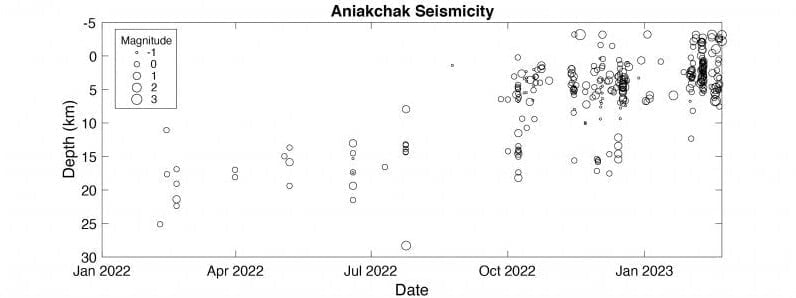
“We expect additional shallow seismicity and other signs of unrest, such as gas emissions, elevated surface temperatures, and surface deformation to precede any future eruption, if one were to occur. Should activity increase, we will issue further notices,” AVO volcanologists said.1
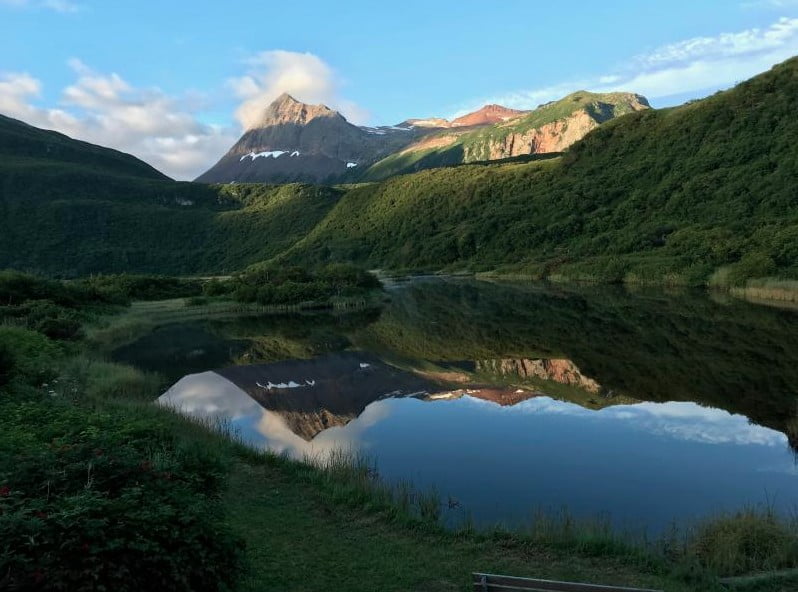
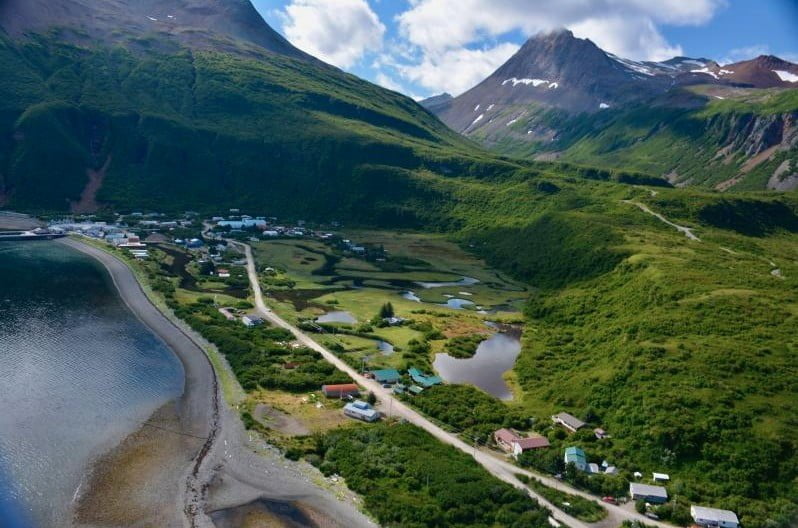
In June 2022, AVO reported that strong winds in a region northwest of Aniakchak and east of Port Heiden resuspended ash and blew it northwest on June 30. A dense cloud of possible resuspended ash near ground levels was identified in Port Heiden webcam views. The altitude of the cloud was unknown, though the report noted that resuspended ash clouds typically do not rise above 5 km (16 400 feet) above sea level. The cloud was not a result of volcanic activity, and the Aviation Color Code and the Volcano Alert Level remained at Green and Normal, respectively.2
The earliest known eruption at this volcano occurred around 6300 BCE, with a maximum Volcanic Explosivity Index (VEI) of 6. This eruption was followed by several other significant explosive eruptions, including one around 1645 BCE (VEI 6) and another around 370 BCE.
In more recent times, a confirmed eruption occurred from May 1 to June 13, 1931, with a maximum VEI of 4. This was the first and only confirmed historical eruption at Aniakchak, with ashfall reported as far as Anchorage, Alaska. An uncertain eruption was reported in 1942, but there is limited information available.
Other confirmed eruptions at Aniakchak occurred around 1540 ± 100 years ago (max VEI 4), 1470 ± 20 years ago, 1370 ± 55 years ago, 1280 ± 145 years ago, 1190 ± 30 years ago, and 1120 ± 80 years ago. There is uncertainty around an eruption that may have occurred around 1050 AD. Another confirmed eruption occurred around 200 ± 255 years ago, with a maximum VEI of 0.
Geological summary
One of the most dramatic calderas of the Aleutian arc, the 10-km-wide (6.2-mile-wide) Aniakchak caldera formed around 3 400 years ago during a voluminous eruption in which pyroclastic flows traveled more than 50 km (31 miles) north to the Bering Sea and also reached the Pacific Ocean to the south. At least 40 explosive eruptions have been documented during the past 10 000 years, making it the most active volcano of the eastern Aleutian arc.
A dominantly andesitic pre-caldera volcano was constructed above basement Mesozoic and Tertiary sedimentary rocks that are exposed in the caldera walls to elevations of about 610 m (2 000 feet). The ice-free caldera floor contains many pyroclastic cones, tuff cones, maars, and lava domes. Surprise Lake on the northeast side drains through The Gates, a steep-walled breach on the east side of the 1-km-high (3 280-foot-high) caldera rim that was the site of catastrophic draining of a once larger lake about 1 850 years BP.
Vent Mountain and Half Cone are two long-lived vents on the south-central and northwest caldera floor, respectively.3
References:
1 AVO/USGS Volcanic Activity Notice for Aniakchak volcano – 01:43 UTC on February 23, 2023
2 Eruptive history for Aniakchak volcano – GVP
3 Aniakchak – Geological summary – GVP
Featured image: Aniakchak volcano on February 9, 2023. Credit: Copernicus EU/Sentinel-2, EO Browser, The Watchers

Commenting rules and guidelines
We value the thoughts and opinions of our readers and welcome healthy discussions on our website. In order to maintain a respectful and positive community, we ask that all commenters follow these rules.